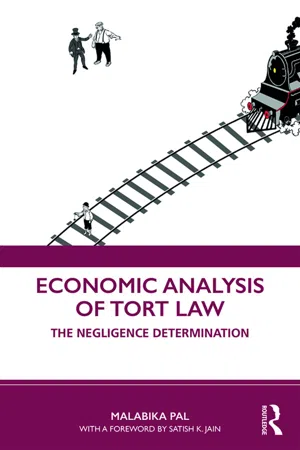Bentham has made a number of important economic points in the Introduction: a person commits a crime only if the pleasure he anticipates from the crime exceeds the expected cost. To deter crime, therefore, the punishment must impose sufficient pain that when added to any other pain anticipated by the criminal will exceed the pleasure that he anticipates from the crime; punishment greater than this should not be imposed, because the result would be to create pain (to the undeterrable criminal) not offset by pleasure (benefits) to the potential victims of crime; the schedule of punishments must be calibrated in such a way that if the criminal has a choice of crimes, he commits the least serious; fines are a more efficient method of punishment than imprisonment because they confer a benefit as well as impose a detriment; the less likely the criminal is to be caught, the heavier the punishment must be, to maintain the expected cost great enough to deter.
Posner argues that these points formed the basis of the economic theory of crime and punishment revived later by Gary Becker.
Posner, however, argues that just because Bentham confined his economic approach (as far as law was concerned) to criminal law, it does not follow that his influence on the economic analysis of law is necessarily confined to the area of crime. In fact, Bentham’s insistence on the universality of utility calculations in human decisions can be considered to be the foundation of the economics of non-market behaviour, which is to say, “the investigation by economists of behaviour that occurs other than in explicit markets.” Posner writes:
A good deal of the economic analysis of law is an application of that economics, because law is primarily a non-market institution and one that regulates non-market as well as market behavior – the behaviour of criminals, prosecutors, accident victims, divorcing couples, testators, polluters, religious believers, speakers and so forth, as well as businessmen, workers and consumers engaged in their conventional activities (an important qualification since businessmen for example, can be polluters or criminals as well as buyers and sellers)… . Bentham may be taken to have invented non-market economics.
Bentham’s promise of the universality of the economic model of human behaviour was resurrected by Gary Becker in the 1950s in his doctoral dissertation on the economic analysis of racial discrimination. In his collection of essays, The Economic Approach to Human Behavior, Becker has used the economic approach in attempting to understand human behaviour in a variety of contexts and situations. In the first chapter he elaborates on what constitutes this “economic approach” and argues that what most distinguishes economics as a discipline from other disciplines in the social sciences is not the subject matter, as has often been projected, but its approach. Summarizing the economic approach, he argues: “all human behavior can be viewed as involving participants who maximize their utility from a stable set of preferences and accumulate an optimal amount of information and other inputs in a variety of markets.” He concludes by saying that “the economic approach provides a valuable unified framework for understanding all human behavior.”14
In the field of law, until the 1960s economic analysis was virtually synonymous with anti-trust economics. That was due to the influence of Aaron Director in the Chicago Law School. He was joined later by Ronald Coase in editing the Journal of Law and Economics, which Posner describes as a landmark development in the law and economics movement. Coase’s “The Problem of Social Cost” undoubtedly had a revolutionary impact on the way the legal world thought about the effects of liability rules. His demonstration of the lack of effect of a legal rule on the allocation of resources where transaction costs are zero came to be known as the Coase theorem.15Priest (2005) argues that the roles of Coase and Director in law and economics are essentially similar, although the Coasean approach has application to a much broader range of legal rules than the Director approach. Neither had an interest in law or the development of law; both of them attempted to explain social behaviour alone.16
Priest distinguishes between two strands of analysis: one concerned with the explanation of behaviour and the influence of law on behaviour exemplified by the Director-Coase type of work; and another concerned with the explanation of law itself – shown by the work of Guido Calabresi and Richard Posner. According to Priest, the sudden intellectual rise of law and economics and its impact on American legal thought can be attributed to the publication of Calabresi’s 1970 book, The Cost of Accidents and Posner’s The Economic Analysis of Law, soon after. The former applies economic analysis, not to practices that led to legal disputes in the manner of Director and Coase, but to the accident law system in its entirety. The framework of the book was considered sufficiently general to implicate a range of other legal fields as well. However, it was Posner’s Economic Analysis of Law, in which he proposed a theory that the central unifying feature of the common law is that its rules are defined to achieve efficiency, that had a greater impact and compelled the legal world to give greater attention to law and economics.
The reason why Posner’s analysis had such widespread impact compared to Calabresi’s17 was his focus on one single central principle – efficiency, underlying all of common law. Priest emphasizes that Posner’s theory of the law is simple:
that common law rules are efficient, that common law judges define a legal rule as if they consciously weigh the relative costs to the disputants of avoiding the dispute and then consciously determine how to optimize future behaviour. Judges, of course, draft opinions incorporating legal terms and concepts, but the analysis of the central rules of common law shows t...
